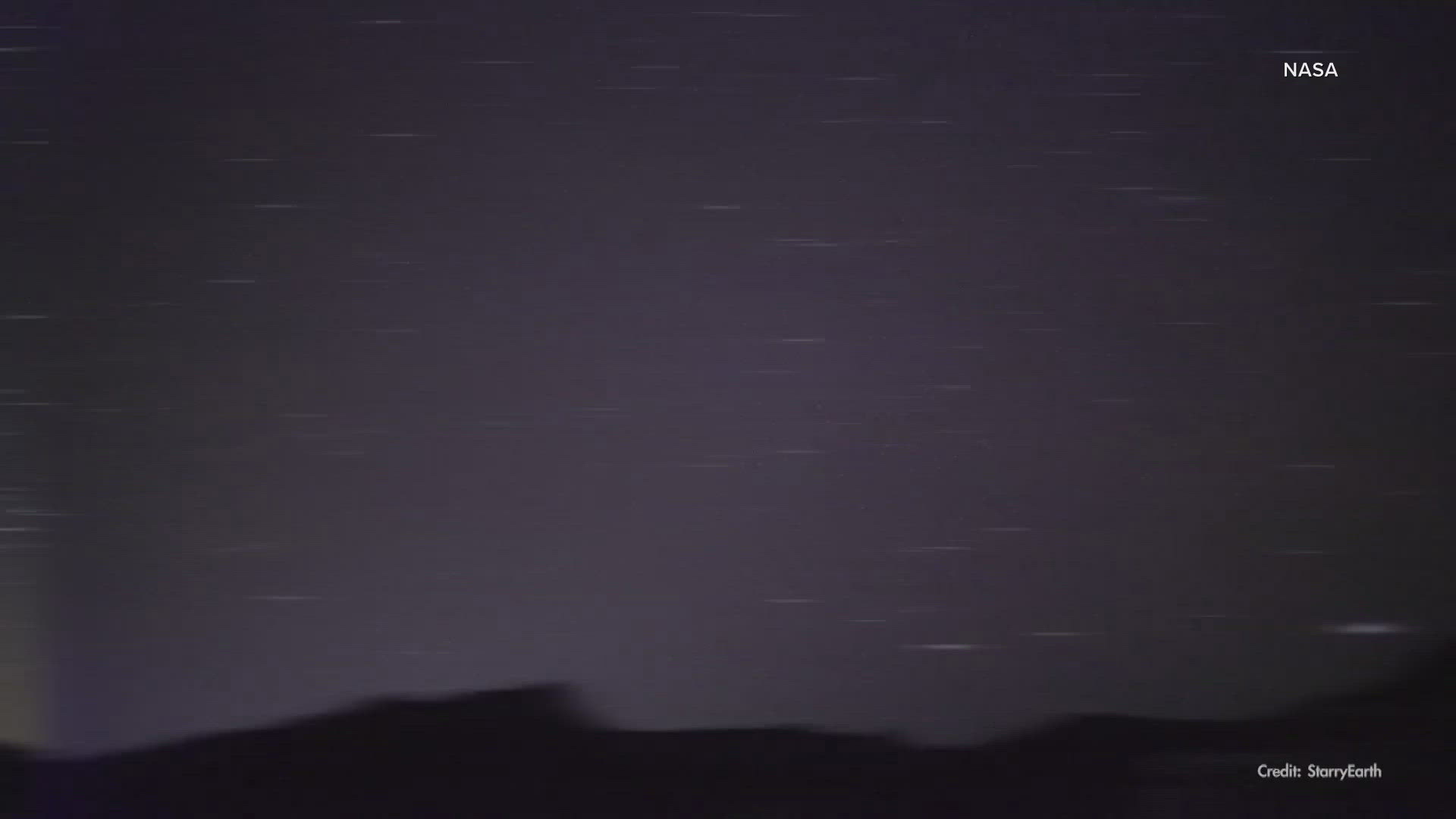TEMPLE, Texas — Editor's Note: The picture attached above was originally part of a different story and does not depict this comet.
A rare sight may be visible in the night sky this summer, a comet not seen from Earth since the 1950s.
Comet 13P/Olbers is currently passing by Earth for the first time in nearly 70 years, according to an article by Sharmila Kuthunur of Space.com.
According to Kuthunur, at the time of writing, the comet is passing through the constellation Leo Minor and is moving fast. The comet reportedly reached its closest point to Earth, 176 million miles, on July 20.
Even at that distance, Comet 13P/Olbers is the brightest comet in the sky, according to EarthSky, with a magnitude, or brightness, of around 6.9 to 7.1. Kuthunur says while the comet is not visible to the naked eye, those in the Northern Hemisphere may still be able to see it with binoculars or a telescope.
To spot the comet, Kuthunur recommends looking about 20 to 30 degrees above the horizon roughly two hours after sunset in the area of Leo Minor. Tips on finding Leo Minor can be found here.
EarthSky says Comet 13P/Olbers orbits the sun roughly every 68 years, having been last seen in September 1956.
If you want to see the celestial visitor, you may want to look now, EarthSky says the comet likely will not be seen again until March 2094.
During its long orbit, Comet 13P/Olbers travels from "just outside" Earth's orbit to out beyond Neptune, according to Kuthunur. The "Olbers" in its name comes from the German astronomer who discovered it, Heinrich Olbers, while the "P" means the comet is periodic, meaning it has an orbit of less than 200 years. The 13 means it was the 13th comet to be categorized as periodic.
More on the comet and how to see it can be found on Space.com at this link or on EarthSky.org at this link.
More from 6 News:

